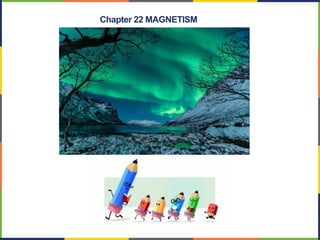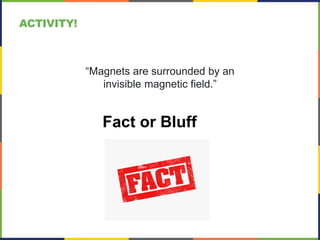This document provides an overview of magnetism and magnetic fields. It begins with an introductory activity on magnetism facts. The document then outlines topics to be covered, including magnetic fields, forces on moving charges and currents, and properties of electromagnets and ferromagnets. Examples are provided to demonstrate how to calculate magnetic field strength and forces. The key points are that magnets produce magnetic fields with north and south poles; magnetic fields exert forces on moving charges; and currents generate magnetic fields according to Ampere's law.




































































